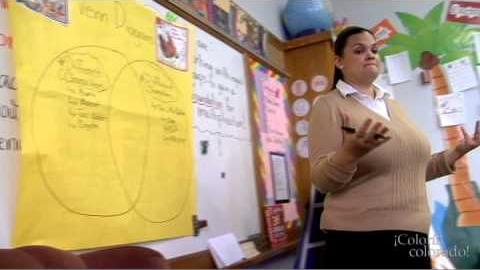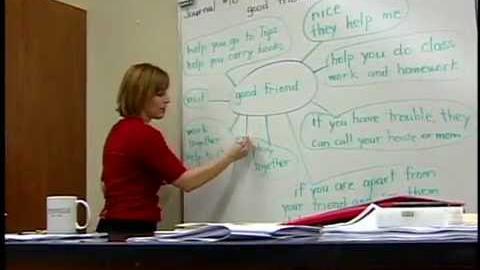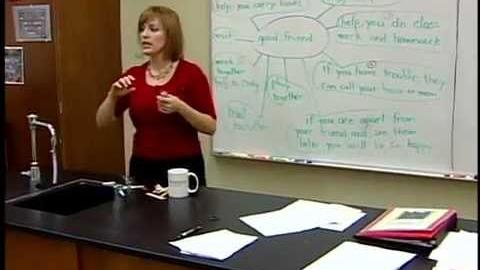Graphic Organizers
Graphic organizers are tools that allow students to organize ideas and information in a visual and hands-on way. This strategy is part of Colorin Colorado's ELL Strategy Library and can be used to support academic language development for all students.
Strategy Overview
There are many kinds of graphic organizers with different purposes. The type of graphic organizer you use will vary by activity and type of thinking (describe, sequence, etc.). It's helpful to browse collections of graphic organizers such as those listed below to get familiar with different formats and templates. Keep in mind that students can also fill out graphic organizers in their home language.
How This Strategy Supports Students' Language Development
Using graphic organizers helps students break big tasks into smaller steps, visually organize information and ideas, and practice the language needed for a particular task. They can also be used to support students across all language domains, including speaking, listening, reading, and writing, and they can be used across content areas.
For example, one well-known type of graphic organizer is a Venn diagram, which can be used to compare similarities and differences.
Another popular kind of graphic organizer is a K-W-L chart, which helps students keep track of what they:
- Know (before the lesson)
- Want to know (before the lesson)
- Learn (after the lesson)
In addition, it's important to look beyond the graphic organizer to what we want students to be able to do with the information within the organizer. There are some helpful ideas for looking at the bigger picture and goals in Deeper Comprehension, an excerpt from AdLit.org's overview of adolescent literacy.
Step-by-Step Instructions
- Choose which kind of graphic organizer you want to use for an activity based on the type of thinking students will be doing, such as brainstorming, summarizing, organizing details, sequencing, comparing and contrasting, or planning an essay or story.
- Explain to students how to use the graphic organizer with clear, simple directions.
- Model how to use the graphic organizer.
- Have students practice in pairs or small groups before assigning them an activity with a graphic organizer independently.
- As students gain more experience with different types of graphic organizers, have them determine which organizer would best serve the purpose of the task. You can also ask them to draw their own organizers, rather than giving them a template.
Activity Ideas
- Cut up a completed graphic organizer and have students work collaboratively reassemble it in order. For example, have them reconstruct a flow map to show proper sequencing of a procedure or reassemble a multi-flow map to show the causes and effects of a historical event.
- After reading a short text, create a graphic organizer to show how the text is structured. Have students practice in teams with other texts so they learn how texts are structured and how to use the organizer in their own writing later.
Differentiation
- Graphic organizers can include different types of scaffolds depending on students' proficiency levels, such as visuals, terms or instructions in students' home languages, word banks, and sentence frames. As students get more comfortable using the organizers, those scaffolds can be adjusted or removed over time.
- Add transition phrases, connectors, or sentence frames so students can speak and write from the organizer in complete sentences. For example, on a Venn diagram or Double Bubble Map for comparing and contrasting, add the words "both," "similar to," or "just like" under the part of the organizer that shows features that are the same.
Lessons Learned
- All students, including ELLs, will benefit from explicit instructions and modeling on how to use different types of graphic organizers. Providing the organizer without providing instructions or practice will likely prevent students from learning how to use the organizer effectively.
- Follow an “I do, we do, you do” process with introducing each graphic organizer. As students switch to "you do," be sure to give them collaborative and independent practice completing graphic organizers so they can transfer the skill to independent learning.
- While you may wish to use different kinds of graphic organizers at different times, regularly use graphic organizers that students are familiar with in your instruction. Using graphic organizers takes practice and repetition and students will benefit from mastering a few key types.
- Choose your organizer carefully so that it clearly structures the type of speaking or writing task students will be asked to do. For example, a bubble map would not be the best choice for a writing task that asks students to sequence the steps of a procedure.
- As noted above, adding words, phrases, and sentence frames onto the organizer will support students in speaking and writing in complete sentences from the organizer. The words and phrases on the graphic organizer can also help students link one idea to another if they are speaking or writing multiple paragraphs.
Co-Teaching Considerations
Content or Grade-Level Teacher
- Identify key skills and activities in which students will be using those skills across different content areas.
- Identify some options for graphic organizers that you already use or would like to try that align to those skills.
English Language Development Teacher
- Share some ideas on how to help students get the most out of using graphic organizers.
- If your co-teachers don't typically use graphic organizers, share some examples and ideas of how they might start.
- Add labeled visuals, sentence frames, and transition phrases to organizers.
- Develop practice activities based on the graphic organizer. For example, have students hold pro-con discussions using information on a T-chart or complete quick writes to process content such as the phases of mitosis shown on a graphic organizer.
Examples
Here are some brief examples of different examples of graphic organizers. See more below.
- K-W-L chart: Previewing and reviewing content
- Cluster web: Brainstorming and writing
- Character map: Character analysis
- Plot diagram: Mapping out plot points, climax, and resolution in a story
- Venn diagram: Similarities and differences
- T-chart: Pros and cons
Recommended Resources
- Using Graphic Organizers with ELLs
- Thinking Maps
- Education Oasis: Graphic Organizers for Vocabulary Development
- TeacherVision: Graphic Organizers
- Education Place: Graphic Organizers
- K-W-L Chart & Lesson Ideas (ReadWriteThink)
- Helping Young Multilingual Learners Develop Their Metacognitive Skills (Edutopia)
In addition, our sister sites include a number of graphic organizers in their strategy libraries:
- Classroom Strategies (Reading Rockets)
- Classroom Strategies (AdLit.org)








